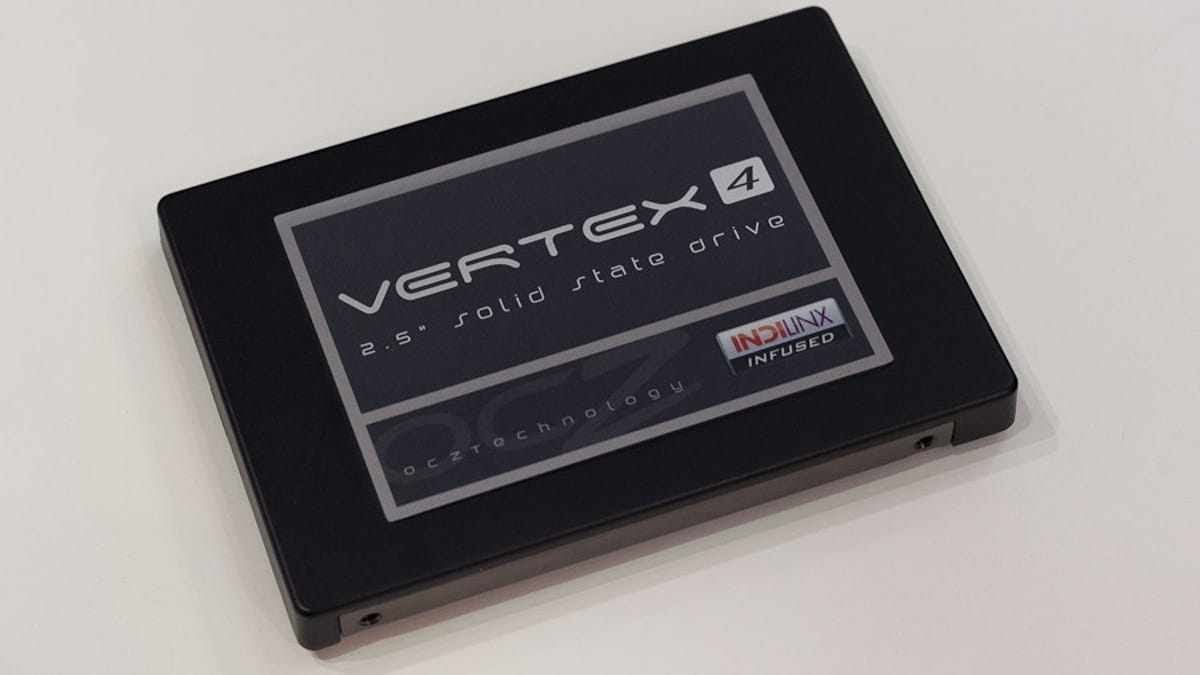OCZ debuts faster SSD, previews Thunderbolt-based Lightfoot
At the CeBIT show, the SSD maker shows its Indilinx-based Vertex 4 SSD and promises a Thunderbolt-based model that vaults over SATA drive limits.
HANOVER, Germany--OCZ unveiled a new solid-state drive here, its higher-performance Vertex 4, and said it'll ship an SSD called the Lightfoot using the Thunderbolt interface later this year that'll be even faster.
Many SSD makers use a controller chip from Sandforce, but OCZ acquired a competitor called Indilinx, and its Vertex 4 uses the Indilinx Everest 2 controller. Where Sandforce gets a performance boost by compressing data, the Indilinx technology uses faster uncompressed links, said marketing director Joost van Leeuwen, speaking here at the CeBIT tech show where it unveiled the products.
The Sandforce-based Vertex 3 products can perform about 40,000 to 45,000 input-output operations per second (IOPS) in real-world use, but the Vertex 4 line will reach 90,000 IOPS, van Leeuwen said. It can reach write speeds of 500MBps and read speeds of 550MBps.
The Vertex 4 will ship in March or April, he said, for a price yet to be determined. It'll support capacities up to 2 terabytes in a 2.5-inch drive package.
SSDs use flash memory that can greatly speed up data retrieval times because they don't have to wait for a read head to move across the surface of the spinning magnetic platter of a hard drive. Instead, SSDs can retrieve data from any patch of memory at the same spead.
However, because flash memory cells essentially wear out, SSDs typically are "overprovisioned" with storage so that raw capacities are higher than what customers actually get. As memory cells go bad, new ones are moved into circulation.
Something that doesn't change with most SSDs today compared to hard drives is the SATA interface. But an increasingly popular approach is to connect flash memory directly to a computer's faster PCI Express interface.
That works fine for expandable tower computers where people can get access to PCIe slots, but not so well for laptops. Enter Thunderbolt, the high-speed interface from Intel that first arrived on Apple Macs and that will spread to some Windows machines later this year. Thunderbolt can communicate using PCI Express commands, and that's just what OCZ's SSD does.
"PCI Express is really the only interface that can provide higher performance," van Leeuwen said.
The Thunderbolt-based Lightfoot can transfer data at 750MBps, he said, vaulting above the limits of the SATA interface. The company expects it to appeal to Mac owners and to people who have to work with data-intensive video and photo files.
OCZ has a preliminary ship date of June for the Lightfoot, with capacities of 128GB, 256GB, and 512GB, he said. The company hasn't set pricing yet. The product uses the Kilimanjaro controller jointly developed by OCZ and Marvell.


